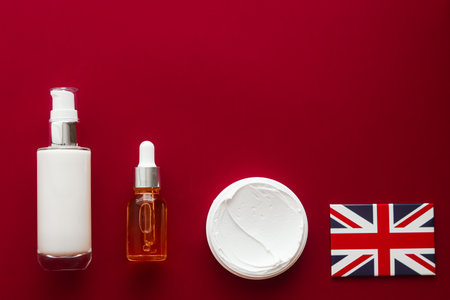Introduction to British Botanicals in Beauty
For centuries, the lush hedgerows, cottage gardens, and wild meadows of Britain have provided a treasure trove of natural ingredients for beauty rituals. From the rolling countryside of Yorkshire to the windswept Cornish coast, generations across the UK have turned to homegrown herbs and native plants for their skincare and haircare needs. These botanicals are not just a nod to tradition—they remain at the heart of many modern homemade beauty products, celebrated for their effectiveness and gentle touch. British beauty routines have long embraced the soothing power of chamomile, the invigorating scent of rosemary, and the nourishing properties of nettle, weaving these local wonders into everyday self-care. As we explore the best British herbs and plants for DIY beauty, it’s clear that these time-honoured ingredients continue to shape how we care for our skin and hair today.
Top British Herbs for Glowing Skin
When it comes to homemade beauty products, British gardens are a treasure trove of skin-loving herbs. Choosing UK-grown botanicals not only supports local growers but also ensures you’re using the freshest and most potent ingredients. Let’s explore three hero herbs—lavender, chamomile, and rosemary—that stand out for their ability to deliver radiant, healthy skin.
Lavender: The Soothing All-Rounder
Lavender is a quintessential British herb, celebrated for its calming aroma and gentle anti-inflammatory properties. It’s ideal for sensitive or irritated skin, helping to reduce redness and promote relaxation. Incorporate lavender into facial steams, toners, or bath soaks for a spa-like glow at home.
Chamomile: Gentle Brightening Power
Chamomile flowers are commonly found in UK gardens and allotments. Renowned for their soothing and brightening effects, chamomile infusions can be used in cleansers and masks to calm redness while giving your complexion a luminous boost. Chamomile is especially beneficial for those with delicate or reactive skin types.
Rosemary: The Revitalising Booster
Rosemary thrives across Britain’s varied climates and is packed with antioxidants that help protect against environmental stressors. When used in homemade tonics or exfoliating scrubs, rosemary stimulates circulation, revives tired skin, and leaves you looking refreshed. Its invigorating scent also adds a uniquely British twist to your beauty rituals.
Herb Benefits & Local Sourcing Tips
| Herb | Main Skin Benefit | Sourcing Tip (UK) |
|---|---|---|
| Lavender | Soothes irritation, reduces redness | Look for English lavender varieties at local garden centres or farmers’ markets |
| Chamomile | Brightens complexion, calms sensitivity | Grow from seed in pots or buy dried flowers from organic shops |
| Rosemary | Antioxidant protection, boosts circulation | Harvest fresh sprigs from your garden or purchase from community gardens |
Quick Tip:
If you’re new to sourcing herbs locally, visit your nearest allotment society or join a community gardening group—many members love sharing surplus harvests!

3. Native Plants for Nourishing Haircare
Spotlight on Classic British Botanicals
If you’re searching for the secret to luscious, healthy hair, look no further than your own back garden. Traditional British herbs like nettle, sage, and mint have been cherished for centuries not just in the kitchen, but as natural haircare heroes. These classic plants are brimming with vitamins and minerals that help strengthen, cleanse, and revitalise your locks.
Nettle: The Strengthening Star
Nettle is a true British staple—rich in silica and sulphur—which helps promote strong, shiny hair. For an easy homemade rinse, simply steep fresh or dried nettle leaves in boiling water, allow to cool, then strain. Use this infusion after shampooing to help reduce scalp irritation and support hair growth.
Sage: For a Healthy Scalp
Sage is well-loved in the UK for its aromatic presence and its ability to soothe the scalp. It’s particularly useful if you struggle with dandruff or oily roots. Add a handful of sage leaves to hot water and let it infuse. Once cooled, use it as a final rinse or mix into your favourite conditioner for extra nourishment.
Mint: Invigorating & Refreshing
Mint brings a cooling sensation and can help stimulate circulation to the scalp—perfect for those seeking a refreshing boost! Crush a few mint leaves and blend them into your homemade shampoo base or infuse them with apple cider vinegar for a zesty clarifying rinse.
DIY Tips for Homemade Haircare
When creating your own shampoos or conditioners, always use freshly picked herbs where possible—ideally from your garden or local British growers. Infuse the herbs in warm (not boiling) water to preserve their beneficial properties, then strain before adding to your beauty recipes. These simple steps not only give your hair an authentic botanical treat but also celebrate the best of British herbal heritage.
4. Crafting Simple DIY Beauty Recipes
If you’re keen to infuse your beauty routine with a touch of British countryside charm, creating your own skincare and body products is a rewarding way to do so. Using herbs and plants readily found in British gardens or local markets, you can whip up effective, all-natural remedies at home. Below is a step-by-step guide for crafting easy beauty recipes, perfect for those new to homemade skincare.
Step 1: Gather Your Ingredients
Select fresh or dried British herbs such as lavender, chamomile, rosemary, mint, and calendula. These form the foundation for most DIY beauty products thanks to their soothing and revitalising properties. You’ll also need basic kitchen staples like honey, oats, olive oil, or beeswax.
Step 2: Choose Your Recipe
Here are some classic recipes using quintessentially British ingredients:
| Product | Main Herbs/Plants | How-To |
|---|---|---|
| Calming Chamomile Face Mask | Chamomile flowers, oats, honey | Mash dried chamomile with oats; mix in honey; apply to face for 10-15 minutes; rinse with warm water. |
| Refreshing Mint Toner | Fresh mint leaves, witch hazel | Brew mint leaves in hot water; strain and cool; blend with witch hazel; store in a spray bottle and use after cleansing. |
| Nourishing Lavender Balm | Lavender buds, beeswax, olive oil | Infuse lavender in olive oil; gently heat with beeswax until melted; pour into small tins and allow to set. |
Step 3: Blend and Store
Always use clean utensils and containers when making your recipes. For masks and toners, glass jars work best. Balms should be kept in airtight tins. Most homemade products last one to two weeks if refrigerated—always check for freshness before each use.
Quick Tips for Success
- Patch test every product before full application—British herbs are gentle but everyone’s skin reacts differently.
- Opt for organic or homegrown ingredients where possible for maximum benefit.
- Add a few drops of essential oils like rose or geranium for an extra British botanical boost.
Your Beauty Routine, Made Local
The joy of crafting your own beauty products lies in the simplicity and purity of the ingredients—and the knowledge that you’re harnessing the best of Britain’s natural larder. Start small with these recipes, then experiment by blending different herbs as you gain confidence.
5. Sourcing and Foraging Ethically in the UK
When it comes to creating homemade beauty products with British herbs and plants, sourcing your botanicals ethically is absolutely crucial. Whether you’re gathering from your own garden, shopping at local farmers’ markets, or foraging in the picturesque British countryside, always keep sustainability and respect for nature at the heart of your routine.
Garden-Grown Goodness
If you have a garden, you’re already on the right track! Cultivating herbs like lavender, rosemary, or chamomile in your own outdoor space allows you full control over growing conditions—no pesticides or chemicals needed. Make it a ritual to harvest only what you need, allowing your plants plenty of time to recover so they’ll continue thriving season after season.
Shopping Locally and Seasonally
For those without access to a garden, British farmers’ markets are a treasure trove of fresh, locally grown botanicals. When buying, always ask about growing practices and opt for organically farmed options when possible. Supporting small-scale growers not only ensures quality but also helps sustain traditional farming methods across the UK.
Foraging in the Countryside
The British countryside offers an abundance of wild herbs—think nettle, elderflower, or wild mint—but ethical foraging is vital. Always follow the “leave no trace” principle: only take small amounts (never more than a third from any one plant), avoid rare or endangered species, and use clean tools to prevent spreading disease. It’s also wise to forage away from roadsides or agricultural fields where pollutants may be present.
Respecting Biodiversity Laws and Traditions
Before heading out with your basket and snippers, get familiar with local biodiversity laws and land access rights. In the UK, the Wildlife and Countryside Act protects many native plants from being picked or uprooted. Always seek permission if you’re foraging on private land, and join a guided walk or workshop if you’re new to identifying wild herbs safely—there’s nothing more quintessentially British than learning these skills from seasoned experts!
Top Tip
Keen foragers often keep a dedicated journal noting locations, seasons, and plant health—why not start your own? This mindful approach ensures you’re harvesting thoughtfully, protecting both your ingredients and the stunning landscapes that make British herbal beauty so unique.
6. Tips for Storing and Preserving Your Botanicals
Keeping your British herbs and plants fresh and full of their natural benefits is crucial when crafting homemade beauty products. Whether youve foraged wild nettle from the hedgerow or nurtured lavender in your garden, proper storage ensures that you can enjoy their goodness all year round. Here’s a practical guide to help you maintain the potency and freshness of your botanicals, so your DIY beauty creations are always at their best—no matter the season.
Drying for Longevity
The most traditional and effective way to preserve British herbs like rosemary, thyme, or chamomile is by drying. Tie small bundles with twine and hang them upside down in a cool, airy place away from direct sunlight. Once completely dried, store them in airtight glass jars labelled with the date and name. This method keeps herbs ready for infusions, facial steams, or bath blends throughout the year.
Freezing for Freshness
If you love working with fresh botanicals such as mint or rose petals, freezing can be a game-changer. Chop or keep whole leaves and place them into ice cube trays topped up with filtered water. Once frozen, transfer the cubes to reusable freezer bags. This way, you’ll always have fresh-tasting botanicals on hand for quick masks or refreshing tonics—even in the depths of winter.
Infusing Oils and Vinegars
Homemade herbal oils or vinegars are not only easy to make but also extend the shelf life of delicate botanicals. For example, infuse calendula petals in sweet almond oil or elderflower in apple cider vinegar. Store these infusions in sterilised bottles out of sunlight. Always label with the date, and use within six months for maximum efficacy in your skincare recipes.
Airtight Storage is Key
Whether dried or infused, keeping your ingredients in airtight containers is essential to protect them from moisture and contamination. Glass jars with rubber seals work beautifully; just be sure they’re thoroughly clean before storing your precious botanicals.
Keep Cool and Away from Light
To prevent loss of colour, scent, and active compounds, store all botanicals in a cool, dark cupboard or pantry. Avoid placing them near heat sources like radiators or sunny windowsills—a true British home knows how quickly things can spoil when exposed to dampness or warmth!
By following these simple yet effective tips, you’ll ensure that your homegrown or foraged British herbs stay vibrant and beneficial throughout the seasons. With well-preserved botanicals at hand, every homemade beauty ritual feels like a celebration of local nature’s bounty—rain or shine!


